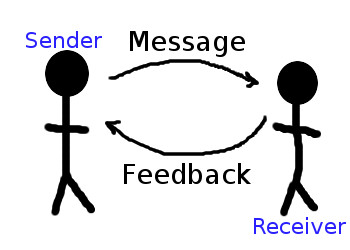Through the use of my blog, I've explored disorientating dilemmas, organizational culture, conflict and communication. These topics are topics that managers or supervisors should be interested in. They can help to provide a better work environment for all stakeholders. I am now going to compare informal and formal leadership structures in the context of Harley-Davidson and Student Safety Programs in my case study. Please click here to learn more about leadership and what type of leadership Harley-Davidson and Student Safety Programs utilizes. After visiting my site and looking through the blog posts and case study, perhaps you can take the information I presented to heart and use it to become a better manager or supervisor for all stakeholders in your organization, even you! Remember, as Casey Stengel once said, "managing is getting paid for home runs that someone else hits." Give your team the tools they will need, including an excellent manager or supervisor, to make sure they can hit home runs for you!
"No one would talk much in society if they knew how often they misunderstood others."
-Johann Wolfgang Von Goethe Through my blog posts, I've been exploring things that I think are very important qualities that a manager or supervisor should exhibit. First, I looked at disorientating dilemmas and how they should be handled by managers or supervisors. In my second blog post, I explored organizational culture and why it is so important to organizations. In my last blog post, I explored conflict and how organizations should really handle it. I am continuing on my search of exactly what makes a fabulous manager or supervisor and now I am looking at communication. Communication within an organization is key. If an organization is not good at communicating with each other or with their customers, stakeholders, etc., they will not be successful and they will ultimately fail. Often times, managers do not communicate clearly with their employees and that leads to conflict!
Communication is the exchange and flow of information and ideas from one person to another; it involves a sender transmitting an idea, information, or feeling to a receiver (U.S. Army, 1983). Effective communication occurs only if the receiver understands the exact information or idea that the sender intended to transmit. Many of the problems that occur in an organization are either the direct result of people failing to communicate and/or process, which leads to confusion and can cause good plans to fail (Mistry, Jaggers, Lodge, Alton, Mericle, Frush, Meliones, 2008). Communication has 2 components: speaking and listening.
There are three phases in the communication process. The first phase, thought, is where information exists in the mind of the sender. This information can be a concept, idea, information or feelings. The second phase, encoding, occurs when a message is sent to a receiver in words or other symbols. The third and final phase in the communication process is decoding where the receiver translates the words or symbols into concepts or information that he or she can understand.
During the transmission of the message, two elements will be received by the receiver. The first element, context, is the actual words or symbols of the message that is known as language, the spoken and written words combined into phrases that make grammatical and semantic sense. Everyone interprets the meanings of words differently so even simple messages can be misunderstood. The second element, context, is the way the message is delivered and is known as paralanguage which is the nonverbal elements in speech such as the tone of voice, the look in the sender's eyes, body language, hand gestures, and the state of emotions (anger, fear, uncertainty, confidence, etc.) that can be detected. Although this element often causes messages to be misunderstood because we believe what we see more than what we hear, they are powerful communicators that help us to understand each other better.
Perhaps you've told someone to do something before and the person you told, the receiver, did not do what you asked them to do. You wonder why the receiver did not do what you wanted them to do. More than likely, the receiver misunderstood the message. A message has not been communicated unless it is understood (decoded) by the receiver. As the sender of a message, you do not know if the message has been sent unless you get communication or feedback from the receiver. This feedback tells the sender that the receiver understood the message, its level of importance and what must be done with it. Communication is an exchange, not just a give, as all parties must participate to complete the information exchange.
Now please watch a movie about the barriers of communication. Although talks about a few barriers to communication, anything that prevents understanding a message is a barrier. I will describe a few more barriers but they are many other physical and psychological barriers that exist. - Culture, background and bias: We allow our past experiences to change the meaning of the message. Our culture, background and bias can be good as they allow us to use our past experiences to understand something new, it is when they change the meaning of the message that they interfere with the communication process.
- Noise: Equipment and environmental noise impedes clear communication. The sender and the receiver must both be able to concentrate on the messages being sent to each other.
- Ourselves: Focusing on ourselves, rather than the other person can lead to confusion and conflict. Some of the factors that cause this are defensiveness, superiority and ego.
- Perception: If we feel the person is talking too fast, not fluently, does not articulate clearly, etc., we may dismiss the person. Also our preconceived attitudes affect our ability to listen. We listen uncritically to persons of high status and dismiss those of low status.
- Message: Distrations happen when we focus on the facts rather than the idea. Semantic distrations occur when a word is used differently than you prefer.
- Environmental: Bright lights, an attractive person, unusual sights or any other stimulus provides a potential distration.
- Smothering: We take it for granted that the impulse to send useful information is automatic. Too often we believe that certain information has no value to others or they are already aware of the facts.
- Stress: People do not see things the same way under stress. What we see and believe at a given moment is influenced by our psychological frames of references - our beliefs, values, knowledge, experiences and goals.
Watch the below video clip from the movie Spanglish for an example of a barrier of communication! Although language is a primary barrier of communication here, do you see other examples of barriers? Perhaps smothering when Deborah doesn't give all the information to Flor. Do you think the environment that Flor is in is also a barrier to communication? Flor is still trying to get used to her surroundings and Deborah is continuously talking. Is perception another barrier? Watch the clip and try to apply the barriers of communication to this scene! Barriers to communication can be thought of as filters. The message leaves the sender, goes through the above filters and is then heard by the receiver. These filters may muffle the message. The way to overcome filters is through active listening and feedback!
Now I want to apply this information to a business setting. Below are a few tips to help you communicate better with people in your organization. You always have to remember that communication is a give and take relationship. - When speaking or trying to explain something, ask the listeners if they are following you.
- Ensure the receiver has a chance to comment or ask questions.
- Try to put yourself in the other person's shoes - consider the feelings of the receiver.
- Be clear about what you say.
- Look at the receiver.
- Make sure your words match your tone and body language (nonverbal behaviors).
- Vary your tone and pace.
- Do not be vague, but on the other hand, do not complicate what you are saying with too much detail.
- Do not ignore signs of confusion.
Communication is a huge topic of study and it's really hard to cover all you'd ever want to know about communication in one blog post. I have given you some great background information that you can hopefully take back to your organization to help you become a better communicator with all the stakeholders of the organization! Check out my next post that wraps all the blogs up and gives you a preview of the my case study!References Clark, Donald. "Communication and Leadership." Leadership. Big Dog and Little Dog's Bowl of Biscuits, 22 May 2010. Web. 07 May 2012. <http://www.nwlink.com/~donclark/leader/leadcom.html>. Menck, Jessica Claire. "Week 5, Lesson A Lecture Notes." 13 Feb. 2012. Lecture.
25% of a typical manager's time is spent responding to dysfunctional conflict."
"Employers will typically spend a total of 13 days in management and HR time on EACH disciplinary case and 9 days on EACH formal grievance submitted."
"On average, employees spend 12 days EACH year dealing with conflict."
Improve Leadership - Develop Teams - Increase Staff Satisfaction - All in One On-line Self Service Programme." People Problems. BP2W. Web. 02 May 2012. <http://www.anevenbetterplacetowork.com/people-problems-cost-calculator.html>.
--------------------------------------------------------------------------------------------------------- The above quotes are astonishing. 25% of a typical manager's time is spent responding to dysfunctional conflict. Can you imagine the amount of money and organization would save if there was no dysfunctional conflict? In addition, you figure a company at least 5 disciplinary cases a year. With 5 disciplinary cases a year and 13 days spent in management and HR time spent on them, in the lifetime of a manager, let's say 20 years, 1300 days are wasted! In the working life of an employee, let's say 40 years is the working life (most high school students get a job at age 16 and then people work until they are able to retire at age 65), 480 days are spent dealing with conflict. Conflict is a huge problem in the workplace and is costing organizations a lot of money! Click here to participate in an exercise where you can calculate the costs of "people problems." In this exercise, you report an average salary of a manager for your organization. For an example, I am going to say the annual average salary of a manager is $50,000. In my example, there is only 1 manager in this organization that manages 30 employees who have an average salary of $35,000 a year. My particular manager has had 5 disciplinary problems and 4 grievances this year which has cost my organization $14,130 and $7,826 respectively. In addition, the time lost in a manager dealing with day to day dysfunctional conflict is $12,500. Finally, for the employees, the amount of money lost to dysfunctional conflict with 30 employees is $54,783. The total cost of dysfunctional conflict in my example is $89,239! An organization could afford to give all of their employees bonuses if they did not have to deal with dysfunctional conflict! As you saw in my example above, conflict costs a lot of money. How do we reduce the effects and costs of conflict on an organization? It seems as though the chances of finding the answer to my question is equivalent to the chances of finding a golden ticket in one of Willy Wonka's chocolate bars. According to Bill Cole, founder and CEO of William B. Cole Consultants in Silicon Valley, CA., there are 4 predictable, ordered,stages that teams go through. The first stage is forming. In this stage, everyone is joining together to form the group. The next stage, storming, is where all the problems generally occur. In this stage, team members are positioning for power, prestige and control without even knowing it! A normally amiable worker can be suddenly transformed into a grasping, maniacal power broker. The third stage, norming, is where everyone knows their position and the team is finally starting to get along. The final stage, performing, is where the team is finally able to put aside their differences and work together to accomplish something. Now that you know the four stages that teams go through, how do you know when a team is in stage 2 (storming)? Below are a few signs that a team is in conflict: - Feelings of defensiveness
- Inadequate and incomplete listening taking place.
- Innocent actions and comments are taken personally.
- Arrival and departure times are not sharp.
- Disagreements over trivial matters.
- Hidden agendas seem to be displayed.
- Power and control are coveted.
- Frustration is evident.
- Personal goals take priority over team goal
- Lack of team commitment is public.
The above is only a SHORT list of signs of a team in conflict. As a manager or a supervisor, you cannot let these issues just "disappear" because they never really disappear. They may go away for a little bit but they will never "disappear" until the problems are addressed. The problems on a team will continue until they are either solved, they make people quit the team, or the team itself implodes. In order to solve these issues, open, honest, direct and safe discussion is very important. It is also important NOT to frame the team's issues as "dysfunctional or negative" because all groups have problems and all groups go through the storming phase. Ignoring, minimizing or mishandling these issues will build a tame that will crack and splinter at the first, tiniest signs of stress. As a manager, if you learn to deal with the storming phase constructively, you will ultimately build a stronger team that can handle even higher levels of stress in the future. You want to teach and help your team learn excellent coping and problem-solving skills now, in a safer, less demanding, less business-critical environment, where mistakes are simply errors and not costly, business-harming tragedies. In this phase, everything needs to be handled sensitively so that all team members retain their dignity and self-esteem. Of course, this sounds great but as a manager, how do you do this for your team? Below are 14 leadership strategies for managing team conflict - Be sensitive to the needs, wants and conflicts your team is experiencing.
- Take seriously what people are saying and give people your full respect, even if the issue being complained about seems trivial. Even seemingly minor issues reflect inner needs the person has which need resolving within a the team.
- Consider using an outside mediator, coach, consultant or facilitator to resolve particularly thorny issues.
- Tackle and achieve victory in at least one, simpler issue to gain traction and a sense of accomplishment and agreement.
- Maintain a positive, constructive problem-solving stance and do not allow whining and complaining beyond the initial discussion of the issue.
- Maximize people's strengths and minimize their weaknesses in a strategic manner to optimize team functioning.
- Realize you will not change personalities or styles people bring to the team, but you can work with them creatively.
- Set an example as a high-performing, crisply-communicating leader.
- Shift gears and wear the many hats of team-leading success, including leader, catalyst, orchestrator, cheerleader, counselor, coach, consultant and organizer.
- Ask what your role might be, if any, in potentially contributing to the conflict.
- Make sure you set a high-minded tone, one that does not allow for scapegoating, negativity, self-pity or lack of vision within the team.
- Encourage active discussion and respectful disagreement so creativity is fostered.
- Change and vary team job assignments to increase energy and interest.
- Use your best judgment when resolving team conflict, maintaining respect for the individual and keeping the best interests of the team in mind at all times.
Using these 14 leadership techniques can help to create a high performing team which is both exciting and challenging at the same time. The potential for excellent business outcomes amplifies as you build your team however you should be aware of the many predictable team pitfalls you will encounter and have solutions and systems ready to apply when they do occur. Now, please watch the below video clips of the IT Crowd. After Jen's interview, you see that the team is in the forming stage. Jen, Moss and Denholm are getting to know each other. Denholm and Moss find out that Jen knows absolutely nothing about IT. The team is now in the storming phase. Denholm and Moss are very upset that Roy made Jen their manager because Jen knows absolutely nothing about IT and has no experience in the field. Jen is very defensive and Moss and Denholm don't believe that Jen should be their manager. Denholm and Moss both say that they are each the manager of the IT department and they are perfectly fine without Jen. Jen, Moss and Denholm then go to Roy's office and as you can see in the second clip, their trip to Roy's office is unsuccessful. Roy completely ignores the problems of the team which is not helpful at all and he passively makes a threat about firing the IT department because they cannot work as a team. Roy is not sensitive to the problems of the team at all and offers them no solutions to help fix the department. After the IT department visits Roy's office and Roy doesn't help them with anything, they are forced to work together because they all want to keep their jobs. Jen works to help bring employees down to the IT department to show them that the department is friendly and very helpful. By doing this, Jen is hoping to improve the image that the IT department has. She attempts to make it the party place in the office building because she knows of the bad rep that the department has. She is being sensitive to the needs of both Moss and Denholm. Jen also keeps in mind that the best interest of the team is getting along with the other departments of the organization and so she works to try to have working relationships with the other departments.
Conflict is present in every organization and organizations have to work to try to minimize conflict and handle it in the best ways to ensure that all stakeholders are positively affected by the conflict. Although dealing with conflict is very challenging, if the conflict is dealt with the right way, all the stakeholders can benefit, like seen in the IT crowd.
Be sure to check out my next post about communication!
References
Cole, William B. "Strategies For Optimal Team Functioning." Peak Performance Solutions. William B. Cole Consultants, 2011. Web. 06 May 2012. <http://www.mentalgamecoach.com/articles/Reduce TeamConflict.html>.
"Improve Leadership - Develop Teams - Increase Staff Satisfaction - All in One On-line Self Service Programme." People Problems. BP2W. Web. 02 May 2012. <http://www.anevenbetterplacetowork. com/people-problems-cost-calculator.html>.
"Culture is the tangible expression of our human experience. Our culture includes the art we make, the clothes we wear, and the language we speak. It includes the institutions we create, the religions we practice, the rituals we perform, and the concepts and beliefs through which we view and interpret our world. Culture is the fabric that holds together and identifies a society. It is passed from one generation to another, yet it is always in flux, changing as it interacts with new ideas and other cultures."
(Ponlop, Dzogchen (2010-11-05). Rebel Budda (p. 47). Shambhala Publications. Kindle Edition.)
I really love the above quote because I think it really defines what organizational culture is. Culture is basically the personality of an organization. Examples of culture are stories, clothing (uniforms), language (jargon), art, music and values. You can tell the culture of an organization by looking at the arrangement of furniture, what the organization brags about, what members wear, etc. Culture is something that is difficult to express distinctly because you cannot see it but everyone knows when they sense it. You can tell the culture of an organization by looking at the arrangement of furniture, what the organization brags about, what members wear, etc. Below is a video about Harley-Davidson and it definitely gives the watcher clues about the culture of Harley-Davidson. You should look closely at what they are wearing in the video and listen carefully to what they are saying. Although this video is really aimed at the riders of Harley-Davidson, a lot of the employees that work for Harley-Davidson also own Harley's. In addition, the employees of Harley-Davidson are the ones that are creating the clothing lines and marketing their products so they also have to believe in the video's message as well.
The video, Harley-Davidson: Live by it, said that they [Harley-Davidson] believe in going their own way, bucking the system, sticking it to the man, freedom, dust, refusing to knuckle down to anyone and black. They believe that life is what you make it and they don't care what anyone else believes. The people in the video have tattoos, long hair and they look rigid.
This next video, Same Stance, New Generation, shows a lot more about the culture within Harley-Davidson. In this video, the employees of Harley-Davidson are the stars and they discuss how products are developed with the organization.
In this video, you hear "our brand is the heartbeat of our company." This quote really says a lot about the culture at Harley-Davidson. The brand is important not only to the customers but also the employees of Harley-Davidson. In the video, you see the clothes that people are wearing. Harley-Davidson employees aren't dressed in suits every day, they wear Harley-Davidson clothing, they are supporting their brand even while conducting business. There are seven central concepts about culture that professors Ken Thompson (DePaul University) and Fred Luthans (University of Nebraska) highlight. - Culture = Behavior: Culture is a word that can be used to describe the behaviors that represent the general operating norms in your environment. Culture is not usually defined as good or bad, although aspects of culture can support progress and success and other aspects can impede your progress.
- Culture is learned: People learn to perform certain behaviors through either the rewards or negative consequences that follow their behavior.
- Culture is learned through interaction: Employees learn culture from interacting with other employees. Most behaviors and rewards in organizations involve other employees.
- Sub-cultures form through rewards: Employees have many different wants and needs. Sometimes employees value rewards that are not associated with the behaviors desired by managers for the overall company.
- People shape the culture: Personalities and experiences of employees create the culture of an organization.
- Culture is negotiated: One person cannot create culture alone. Employees must try to change the direction, the work environment, the way work is performed, or the manner in which decisions are made within the general norms of the workplace. Culture change is a process of give and take by all members of an organization.
- Culture is difficult to change: Culture change requires people to change their behaviors. It is often difficult for people to unlearn their old way of doing things, and to start performing the new behaviors consistently. Harley-Davidson has been trying to change the culture within their manufacturing plants and it is not an easy task.
There are also four different types of culture identified by researcher Jeffrey Sonnenfeld: Academy, Baseball Team, Club and Fortress culture. - Academy Culture: Employees are highly skilled and tend to stay in the organization, while working their way up the ranks. The organization provides a stable environment in which employees can develop and exercise their skills. Examples are universities, hospitals and large corporations.
- Baseball Team Culture: Employees are "free agents" who have highly prized skills. They are in high demand and can rather easily get jobs elsewhere. This type of culture exists in fast-paced, high-risk organizations such as investment banking and advertising.
- Club Culture: The most important requirement for employees in this culture is to fit into the group. Usually employees start at the bottom and stay with the organization. The organization promotes from within and highly values seniority. Examples are the military, and some law firms.
- Fortress Culture: Employees don't know if they'll be laid off or not. These organizations often undergo massive reorganization. There are many opportunities for those with timely, specialized skills. Examples are savings and loans and large car companies.
I believe that Harley-Davidson has academy culture. A lot of their employees stay with the organization and work their way horizontally (department to department or team to team) and vertically (promotions within the organization) within Harley-Davidson. Organizational culture is really important today in every part of the organization. When organizations are hiring, they try to find someone with the knowledge, skills and abilities that the positions requires but also someone who would fit in with the organization and work well with their coworkers. Below, Ann Rhoades, founder of People Inc., discusses organizational culture and how it affects hiring new employees.
Be sure to check out my next post about conflict in the work place!
References
Gilsdorf, Jeanette W. "Organizational Culture." Organizational Culture. Advameg, Inc., 2012. Web. 01 May 2012. <http://www.referenceforbusiness.com/management/Ob-Or/Organizational-Culture.html>.
Heathfield, Susan M. "Culture: Your Environment for People At Work." About.com Human Resources. About.com, 2012. Web. 01 May 2012. <http://humanresources.about.com/od/organizationalculture/a/culture.htm>.
McNamara, Carter. "Organizational Culture." Free Management Library. Authenticity Consulting, LLC., 2000. Web. 01 May 2012. <http://managementhelp.org/organizations/culture.htm>.
Menck, Jessica Claire. "Week 2, Lesson B Lecture Notes." 25 Jan. 2012. Lecture.
Ponlop, Dzogchen (2010-11-05). Rebel Budda (p. 47). Shambhala Publications. Kindle Edition.
Ziegler, Angie. "Harley-Davidson Leadership." 4 Apr. 2012. Lecture.
According to the Living Systems Theory, organizations (like organisms) want to remain in a state of homeostasis or balance. When an organization or an organism is not balanced, decisions are made based on how to relieve strain or disequilibrium in the system. Behaviors within an organization are directed to reduce strain and increase balance and mobility.
Department of Public Safety and Student Safety Programs
For a little background information on the Department of Public Safety and the safety resources available around the Marquette campus, please watch the video below.
As you might not already know, when Marquette students came back to campus for fall semester, they had already received numerous emails from Public Safety informing them of the numerous armed robberies that had occurred. The semester began and the robberies still were occurring, at numerous rates. Marquette’s Department of Public Safety (DPS) was under a lot of heat to stop these robberies, protect the students and get the people that were robbing students. During the first week of class, the chief of the Department of Public Safety mandated that Student Safety Programs (SSP), DPS’s partner in crime, have 8 vans on the road at all times. The SSP supervisors had to fill in to ensure that there were at least 8 vans on the road at all times. In addition, Public Safety Officers (PSOs) were held after the shift to assist with other shifts and were given incentives to come in on their days off so there were also extra officers on the road. The crimes continued to occur and the LIMO Scout was created. The chief created the LIMO Scout to help the PSOs patrol areas of campus were the LIMOs either could not go or were not regularly patrolling. The LIMO Scout patrolled the alleyways as well as the outskirts of campus. If the driver of the LIMO Scout came across any student (s) walking home at night, they were to roll down the window and ask them if they wanted a ride home. The LIMO Scout had a strobe on top of it and had the SSP crest on it so students would know it was part of SSP. The above is an example of a disorientating dilemma that effective the entire Marquette community. The homeostasis of the Marquette community was interrupted by the robberies that were occurring on or around campus. The numerous robberies caused a strain on the system and it required a response from the Department of Public Safety and Student Safety Programs. The chief of the Department of Public Safety made sense of the situation. He then decided that officers would be given incentives to come in on their days off to help out and that SSP would have to have at least 8 vans on the road at all times. After deciding this, the chief then had to make meaning of what had happened and then learn from the experience. Finally, termination and closure occurred. Harley-Davidson All organizations, doesn’t matter what industry they are in or if they are a non-profit or for profit organization, face disorientating dilemmas. Harley-Davidson also faced a disorientating dilemma and as a result laid off a huge part of their labor force. In the 1980s, Harley-Davidson was thriving. They were making so much money. They were the only American motorcycle producer at the time. The 1990s still brought profits to Harley-Davidson however if they did not start attracting a new customer base and improve their processes, they were not going to make it. Harley-Davidson executives realized that if they did not make some kind of change, Harley-Davidson would not make it in the motorcycle industry. Harley-Davidson then decided that they would slim down their production. For example, at the Harley-Davidson York, PA. production plant, Harley-Davidson laid off approximately half of its labor force. In addition, they also tried to streamline their processes. At the time, each of Harley’s different plants were running on different operating systems. For example, one plant would be operating a Windows 98 platform while another one was running a Windows Vista platform. With the different operating systems throughout the organization, streaming production was basically impossible. Harley upgraded all their plant facilities so they were all running on the same operating system. Finally, Harley made a big push to improve quality on their motorcycles. Harley-Davidson took some lessons on Japanese motorcycle producer, Suzuki, on quality. Harley-Davidson then made meaning of what had happened. They saw that they needed to have organization wide processes. They also found that they were being beat in the quality of their motorcycles. They then had to learn from the experience. Harley-Davidson finally learned how to be competitive in the motorcycle industry. Finally, they terminated the situation. Writing of Margaret Wheatley and Deborah FriezeMargaret Wheatley and Deborah Frieze start off their article with the following quote: "the world doesn’t change one person at a time. It changes as networks of relationships form among people who share a common cause and vision of what’s possible." At both Harley-Davidson and Marquette's DPS/SSP, changes were made so the organizations would run more efficiently and to meet their goals. The changes that were made at both Harley-Davidson and DPS/SSP could not have occurred if it weren't for the networks of relationships that formed among people who shared a common goal. Margaret Wheatley and Deborah Frieze then continue and say "they [networks] need to evolve into intentional working relationships where new knowledge, practices, courage, and commitment can develop . From these relationships, emergence becomes possible. Emergence is the process by which all large-scale change happens on this planet. Separate, local efforts connect and strengthen their interactions and interdependencies. What emerges as these become stronger is a system of influence, a powerful cultural shift that then greatly influences behaviors and defines accepted practices. " For Harley-Davidson, they used their partnership with Enterforce Inc., a managed service provider, to help humanely lay off quite a few employees, contigent workers, etc., to be more effective in the market and ensure the continued success of the company. Harley-Davidson is currently in the stage that Margaret Wheatley and Deborah Frieze talk about where a "powerful cultural shift occurs that greatly influences behaviors and defines accepted practices." When Angie Ziegler came to speak, As for DPS and SSP, the LIMO Scout was a product of a relationship that was formed among people who shared a common goal (safety). I am not quite sure that emergence has happened yet for SSP or DPS. Because the LIMO Scout was a product of a crisis (too many robberies), I don't think the relationships of people have evolved enough that new knowledge, practices, courage or commitment have been developed. I think that both departments still have a lot to improve upon before they both can work in unison and be truly successful. Make sure to check out my next post about organizational culture!References"Harley-Davidson History." Harley-Davidson. Harley-Davidson, 2012. Web. 30 Apr. 2012. <http://www.harley-davidson.com/en_US/Content/Pages/H-D_History/history.html?locale=en_US&bmLocale=en_US>. Menck, Jessica Claire. "Week 2, Lesson A Lecture Notes." 23 Jan. 2012. Lecture. Wheatley, Margaret, and Deborah Frieze. "How Large-Scale Change Really Happens - Working with Emergence." The School Administrator (2007). Web. <http://d2l.mu.edu/d2l/lms/content/viewer/main_frame.d2l?ou=189630&tId=1006574>. Ziegler, Angie. "Harley-Davidson Leadership." 4 Apr. 2012. Lecture.
|







 RSS Feed
RSS Feed